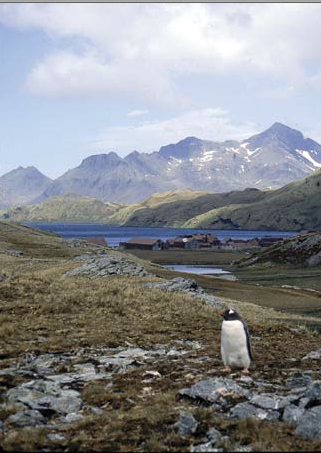
This is an extraordinary and little-known story of emigration from Scotland. This is an extraordinary and little-known story of emigration from Scotland. Caithness and Patagonia are literally a world apart, yet in the late 19th and early 20th centuries, a number of Caithness men and women took on the challenge of this wild, open and windswept land. The book provides the origins and backgrounds of these Caithness Patagonian pioneers and sets their experiences alongside the growth and development of Patagonia as one of the world’s great sheep farming areas.
The story begins with John Hamilton, the son of a tailor from Wick, who arrived in the Falkland Islands in 1880. Over the following 60 years, he and other Caithness men and women became a significant force in the development of sheep farming in Patagonia. As one of Patagonia’s most enterprising sheep farmers, he was the catalyst for a number of other Caithness men making what must have been a huge decision to uproot from their native home. It was not just Caithness men who embarked on the journey – sisters and wives followed as new lives were ground out of the unforgiving landscape.
There are stories of endurance and determination against the odds; accounts of death and disaster, but most of all there are tales of how these Caithnessians conquered Patagonia and built successful businesses to the extent that today their descendants are integral to many aspects of Patagonian and Argentine society.
The roll call of names – Bain, Barnetson, Begg, Bremner, Budge, Cormack, Harper, Mowat, Nicolson, Plowman, etc. – is like a Caithness directory. Their stories and legacies continue to be proudly held dear by descendants and relatives both in Caithness, the UK and in Argentina.
The Caithness Patagonian story was originally brought to light by Margie Sinclair for the BBC Odyssey series. Caithness to Patagonia charts the backgrounds, successes and failures of these intrepid pioneers who created a new life, far away from their homes and families. Read the full story – Caithness to Patagonia
We were also featured in ‘A road less travelled’ – Sutherland, Caithness and Orkney Part 1 – BBC Two Scotland First shown – Dec 2016.
Research Notes
Caithness & Patagonia some of the strories we discovered
FISHERMEN FAMILIES – A number of those who went from Caithness to Patagonia came from crofter/fishing families. This is all that remains of the fishing station at Achastle.
BAIN FAMILY CROFT – Seven of the Bain family, plus a niece and nephew left Caithness for Patagonia. They were crofters and fishermen in Caithness and played a key role in the development of sheep farming in Patagonia. Their original croft house at Mavesy still stands
BIG BUSINESS – Angus McPherson from Caithness began his Patagonian shepherding life on Estancia San Gregorio, one of the largest sheep farms in Patagonia.
THE CAITHNESS HOMESTEADS – Two Caithness families with Patagonian connections lived at Todholes in Lyth. All that is left of the crofting community is this old steading.
PATAGONIAN MINISTERS – The remoteness and the scattered nature of the Patagonian estancias meant that people were often far away from any form of religious support. The Church of Scotland and the United Free Churches recognised the problem and put a lot of effort into supplying ministers. This advert from the Scotsman in 1925 demonstrates their commitment
Minister – C of S or U.F. minister wanted immediately for Patagonia, preferably under 35; three years engagement (renewable); part of each year in Buenos Aires; salary, £600; new motor car; £100 annually for expenses and first class return fare; unique opportunity for vigorous man. Applications, before July 4th, to Thomas Henderson, 22 Queen Street, Edinburgh.
WOMEN in PATAGONIA – Many of the Caithness Patagonian Pioneers returned home to find a wife. For the women in Patagonia the choice was limited!
PATAGONIAN ROAD KILL – In 1922 John Hamilton accidentally ran over a rare Patagonian Weasel. Mindful of the need to preserve our natural history, he had it sent to Royal Scottish Museum in Edinburgh (where it remains to this day)

A NEW HORIZON – Patagonia is a long way from Caithness, both physically and mentally. Apart from the wide horizons common to both, there is, literally, a world of distance between the two. In the late 19th century, however, a number of Caithness people took on the challenge of Patagonia.
Many thanks to all the Patagonian Pioneer families that are offering to open up their ‘archives’. We know that some went first to the Falkland Islands and the archivists at Jane Cameron National Archive and the Falkland Islands Company have been most helpful.



















